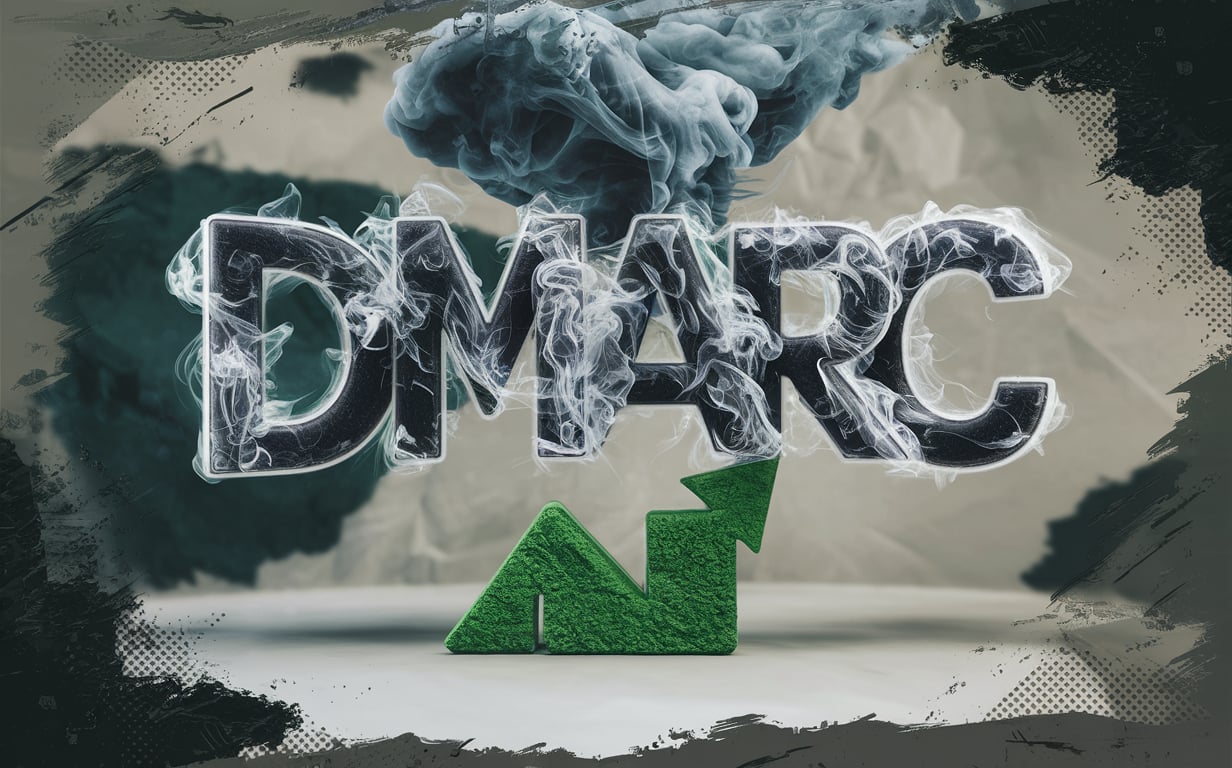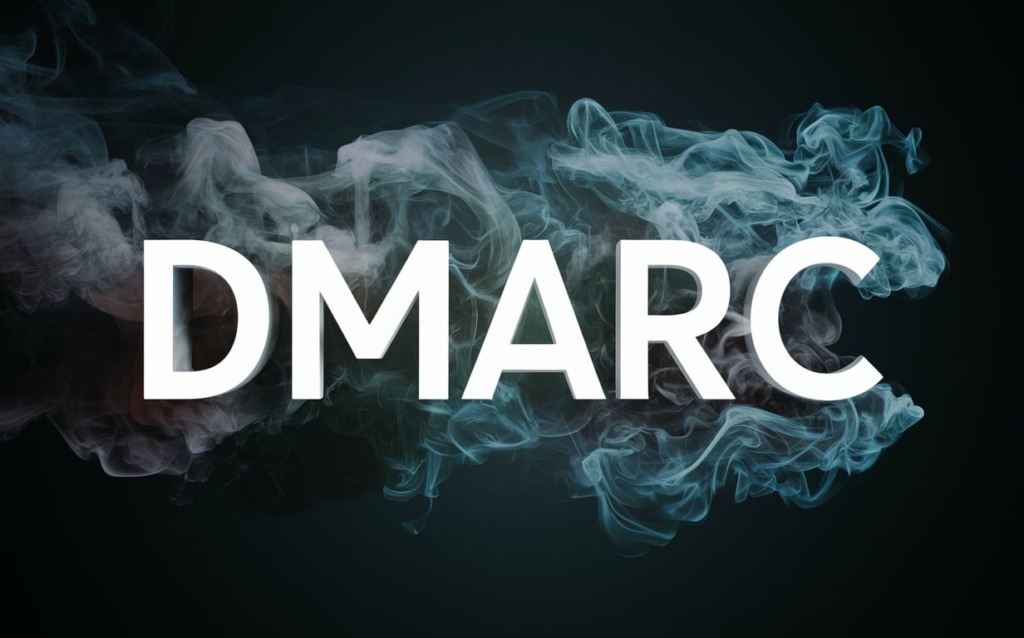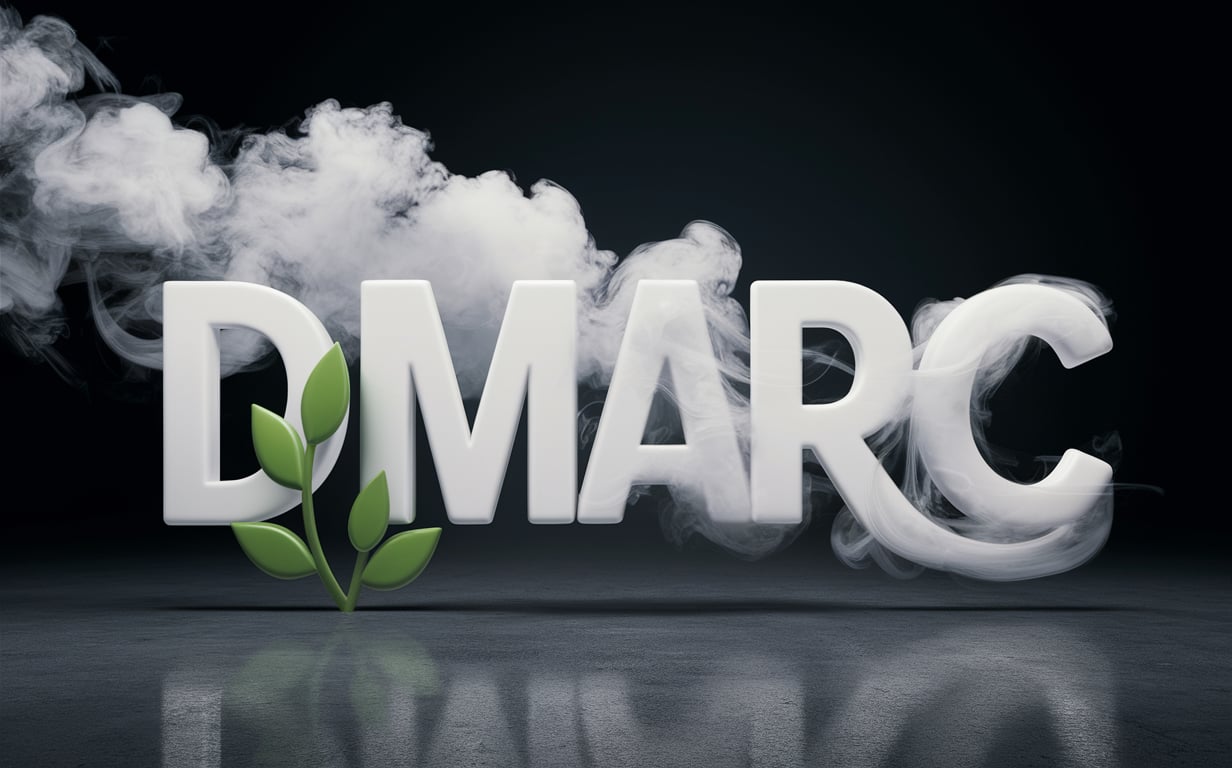Do you want bulletproof email authentication to stop phishing and spoofing? Then it’s time to become a DMARC expert!
Implementing DMARC can be tricky. But mastering it is worth every ounce of effort. This comprehensive guide shares the exact steps to go from DMARC beginner to expert across implementation, reporting, training and more.
Follow along and gain the email security superpowers all IT teams need in 2024. By the end, you’ll have the expertise to slay phishing dragons with a precisely configured DMARC!
What is DMARC and Why it Matters for Email Security
Email spoofing and phishing attacks are becoming more sophisticated every day. That’s why implementing DMARC as part of your email security strategy is critical in 2024.
Understanding the DMARC Authentication Framework
DMARC (Domain-based Message Authentication, Reporting, and Conformance) is an email authentication protocol that builds on SPF and DKIM to help defend against spoofing and phishing. Here’s a quick overview of how DMARC works:
- SPF checks that incoming mail comes from an authorized server
- DKIM verifies the email content wasn’t altered in transit
- DMARC aligns SPF and DKIM results, checking they both pass authentication for a domain
- DMARC specifies a policy for handling failed email (quarantine or reject)
- Aggregate reports provide visibility into DMARC authentication
By combining SPF, DKIM, and DMARC, you get powerful protection against spam, phishing, and other malicious email.
For DMARC to work, you first need to publish special DNS TXT records:
- SPF TXT record lists your authorized mail servers
- DKIM TXT records contain your public keys
- DMARC TXT record tells receivers your authentication policy
With this foundation in place, DMARC can then check incoming mail and apply your reject or quarantine policy to bad emails pretending to be from your domain.
How DMARC Protects Against Email Spoofing and Phishing
Here are 3 key ways DMARC prevents spoofing and phishing:
1. Email source verification
DMARC alignment checks if both SPF and DKIM pass for a message. This verifies the email truly originated from your domain.
2. Detects spoofed “from” addresses
Even if the content passes DKIM, if the “from” address doesn’t align with SPF servers, DMARC catches the spoofing attempt.
3. Applies domain-level authentication policies
With DMARC policies (p=none, p=quarantine, p=reject), you tell receivers how to handle failed emails for your whole domain.
These capabilities make life extremely difficult for phishing imposters misusing your domain. DMARC rejects their messages at the protocol level before they ever reach an inbox.
The Benefits of Having a DMARC Policy
Implementing DMARC provides many advantages:
- Protects customer trust – Prevents confusion/harm from phishing emails impersonating your brand
- Boosts email deliverability – Authentication builds sender reputation for inbox placement
- Increases visibility – Aggregate reports provide DMARC authentication insights
- Improves security posture – DMARC is a must-have for email security best practices
- Saves time – Less spoofing means fewer phishing complaints to deal with
Based on Cisco Talos research, DMARC could have prevented 90% of phishing attacks in 2021.
With stats like this, it’s clear every security-conscious organization needs DMARC monitoring and enforcement. Implementing DMARC takes your email protection to the next level.
To recap, DMARC leverages SPF and DKIM to authenticate your mail and stop imposters. As an open standard supported by receivers like Gmail, Yahoo, and Outlook, DMARC is a must-have email validation protocol to repel phishing and spoofing. Take the time to deploy DMARC properly and you’ll gain critical protection against business email compromise attacks targeting your domain.

Getting Started with DMARC Implementation
Ready to implement DMARC and combat email spoofing? Here are the key steps every beginner should take to start enforcing DMARC authentication for their domain:
Performing a DMARC Record Check
Before making any changes, it’s wise to check if you have an existing DMARC record. Use a DMARC record lookup tool and enter your domain, like:
example.comThis verifies if you already have a DMARC TXT record present and what policy it’s enforcing.
If no record is found, you have a blank slate to set up DMARC from scratch. If a record exists, review the settings and determine if you want to keep or modify it.
For example, you may find a record like:
v=DMARC1; p=none; pct=100; rua=mailto:[email protected]This has a policy (p) of “none” so non-compliant mail is still delivered. The pct of 100 means all messages are subject to DMARC, while rua sends aggregate reports to the specified email.
Checking first avoids making redundant records if one exists, and gives insight if DMARC needs updating.
Generating a DMARC Record
The next step is generating a new DMARC record tailored to your needs if you don’t have one already:
- Domain – Your organization’s domain name (example.com)
- Policy – “None”, “Quarantine”, or “Reject” for handling DMARC failures
- Percentage – Rollout percentage like 100% for full enforcement
- Reporting Addresses – Inboxes to receive DMARC aggregate reports
- Other Options – As/Af tags, fo tag, etc to tune the DMARC record
A DMARC record generator makes it easy to create a valid DMARC entry without having to manually worry about the syntax.
Start with a relaxed policy like p=none and lower pct to gradually roll out DMARC. This ensures minimal delivery impact as you validate authentication.
Publishing Your DMARC Record in DNS
Once you have a DMARC record, it’s time to publish it in DNS so receiving mail services can check inbound mail against it.
Add the DMARC record as a TXT entry in the _dmarc subdomain. For example:
_dmarc.example.com. TXT "v=DMARC1; p=none; pct=100; rua=mailto:[email protected]"Depending on your DNS host, you may need to remove quotes if adding directly through their control panel.
Be sure to publish the DMARC record at your domain’s highest level only. Don’t add it at subdomains like:
_dmarc.mail.example.com This ensures DMARC takes effect globally across your email domain.
Give DNS 24-48 hours to fully propagate the new TXT record worldwide.
Communicating with Partners About Your DMARC Policy
The final step is reaching out to your key senders and partners that mail on your behalf:
- ESPs/marketing platforms
- SaaS apps sending email notifications
- Agencies/service providers managing communication
- Contractors utilizing your email domain
Make them aware you’ve implemented DMARC and ask them to authenticate message sources like:
- Using authorized IPs in SPF
- Adding DKIM signatures
- Honoring your DMARC policy
- Providing feedback on issues
Ideally provide partners a few months to prepare for DMARC enforcement. Continue monitoring aggregate reports to see their adoption and compliance.
With planning, partner alignment, and gradual rollout, you can enable DMARC successfully. This establishes critical email authentication to protect your customers from deceptive phishing scams.
Starting with “p=none” and working up to “p=reject” gives flexibility to enable DMARC without disruption. Follow these best practices and you’ll be well on your way to implementing air-tight DMARC protection.

Managing and Tuning Your DMARC Deployment
Implementing DMARC is just the first step. To become a DMARC expert, you need to monitor authentication, diagnose issues, and gradually strengthen enforcement over time.
Interpreting DMARC Aggregate Reports
The key to managing DMARC is keeping a close eye on your aggregate reports. These XML files contain data on all mail processed against your DMARC record:
- Authentication results for each source
- Policy decisions on passing vs failing mail
- Email volumes and actions taken
- Top sending domains and IP addresses
This intelligence helps you pinpoint any authentication gaps and their impact.
Focus on the “Auth Results Breakdown” section for key stats like:
- SPF Alignment – % of mail aligned with SPF records
- DKIM Alignment – % of mail aligned with DKIM records
- DMARC Alignment – % passing both SPF & DKIM checks
Low alignment highlights issues to address. Review the detailed source tables to find and fix non-compliant entries not yet enabling DMARC.
Pay attention to “Policy Applied” stats too:
- Percentage – Of emails subject to DMARCPolicy Actions – What happened to both passing and failing mail
As you increase your DMARC percentage and enforcement policy, you want to see actions shift from “deliver” to “quarantine” or “reject” for failures.
DMARC report analyzers make parsing aggregate data easier with visual graphs and clearer formatting. Lean on tools to streamline monitoring and analysis.
Diagnosing DMARC Policy Failures
When your policy actions start including “quarantines” and “rejects”, use DMARC failure/forensic reports to diagnose the underlying issues:
- Sample quarantined/rejected emails show exactly which messages failed
- Check headers to identify which authentication led to failure
- Troubleshoot configuration gaps causing alignment problems
For example, you may see an email failed DKIM alignment. Investigating further reveals your marketing platform isn’t signing a specific campaign stream.
Or an email address fails SPF alignment due to a contractor sending from their own IP. You can ask them to use proper servers instead.
Failure reports shine a spotlight on policy gaps to close. Begin enforcing DMARC policies once you have above ~90% alignment, then leverage failures during tuning.
Optimizing Authentication Protocols
To maximize DMARC coverage, optimize implementations of supporting protocols:
Tighten SPF
- Eliminate overly permissive records like “~all”
- Remove outdated/unused entries
- Monitor DNS request volume as it nears 10 lookup limit
- Use macro functions for better SPF hygiene
Expand DKIM Signing
- Audit all systems and channels that send email
- Enable signatures where missing
- Use a 1280+ bit private key
- Check for relaxed signing practices like missing headers
Adopt Additional Layers
- BIMI to authenticate branding
- MTA-STS to enforce TLS transport
- TLS-RPT for SSL visibility
Layered email authentication amplifies your DMARC protections.
Gradually Increasing Your DMARC Policy From None to Quarantine/Reject
Once you achieve sufficient alignment levels (~90%+), gradually ramp up enforcement:
1. Increase percentage
- First raise pct tag from 100% to “rrrr” for subdomains then root domain
- Confirms subdomains and sampler traffic ready before full enforcement
2. Tighten policy
- Update policy from “p=none” to “p=quarantine”
- Soft failure allows monitoring impact before reject
3. Expand to “Reject”
- After sufficient quarantine period, move policy to “p=reject”
- Stops DMARC failures more aggressively at SMTP level
This stepped approach prevents disruption. You can even pause between increments to allow more remediation time.
Monitor aggregate and failure reports to watch the impact as you tighten policies. Pace your DMARC deployment in alignment with your resources and risk tolerance.
Ongoing tuning and learning allows you to truly master DMARC. Treat it as an iterative, data-driven process to dial in policies and achieve email security expertise.

Achieving DMARC Expertise
Congratulations, you now have DMARC configured and are handling basic management. But true expertise requires mastering advanced concepts and cementing your DMARC knowledge over time.
Mastering Advanced DMARC Concepts and Workflows
To become a DMARC expert, level up your technical skills:
Forensics and Reporting
- Analyze XML and JSON report formats
- Build visualizations and metrics from raw data
- Automate report retrieval and analysis
- Correlate DMARC data with delivery logs
Infrastructure Integration
- Monitor DMARC with SIEM log analysis
- Trigger policy changes via APIs
- Create feedback loops between systems
- Build custom DMARC data pipelines
Edge Case Handling
- Configure DMARC for complicated or legacy environments
- Account for mailing list providers and third-party senders
- Enable hybrid DMARC models across brands/subsidiaries
- Adapt policies for transactional email vs. marketing
Email Authentication Interaction
- Implement overlapping auth protocols like ARC, BIMI, and MTA-STS
- Balance DMARC with subscriber engagement needs
- Align authentication approach across Engagement/Security/Compliance teams
The more complex your use case, the more you need to master DMARC’s advanced capabilities and integrations.
Staying Up-To-Date on Email Authentication Specifications
Like any technology, email authentication continues evolving:
- Monitor the DMARC RFC spec for updates
- Review the DMARC aggregate spec as it adds new tags
- Watch the MARF spec proposal for JSON reporting
- Follow the BIMI](https://www.bimigroup.org/specification/) and [MTA-STS drafts as they progress
Keeping current ensures you use email authentication optimally and prepare for coming changes.
Beyond specifications, stay atop industry trends:
- Email security threats like business email compromise
- Deliverability tactics of major mailbox providers
- Sophistication of phishing lures and social engineering
- Adoption of supporting technologies like ubiquitous TLS
Proactively evolve your DMARC expertise to address the ever-changing email landscape.
Helping Others in Your Organization Understand DMARC
The final hallmark of expertise is teaching others. Share your DMARC knowledge internally:
- Create Documentation – FAQs, standards, implementation guides
- Host Lunch & Learns – DMARC overview sessions
- Evangelize Authentication – Newsletter, blog, presentations
- Train IT Staff – Workshop for technical teams supporting DMARC
- Guide Business Units – Help marketing, support, etc. with adoption
Enabling your colleagues develops organizational DMARC maturity.
You can also participate in external outreach:
- Speaking at industry conferences
- Publishing blog articles and whitepapers
- Joining email security standards groups
- Discussing DMARC in forums and social media
- Contributing to open source reporting tools
Teaching what you’ve mastered cements your own expertise while helping the community.
The more you learn, apply, and explain DMARC, the further you’ll progress on your journey to becoming a DMARC expert. It’s an ongoing investment that pays dividends in protecting your business from email spoofing and phishing.

Key Takeaways: Your DMARC Expertise Checklist
DMARC expertise allows you to fully leverage email authentication to protect your domain. Here are the key lessons to master:
- Learn how DMARC builds on SPF and DKIM to prevent spoofing/phishing
- Check for an existing DMARC record before making changes
- Use a generator to create a valid DMARC record tailored for your needs
- Publish your DMARC TXT DNS entry at the domain level
- Inform partners to prepare for DMARC authentication
- Closely monitor aggregate and forensic reports
- Diagnose policy failures and optimize authentication protocols
- Gradually increase DMARC enforcement as you reach alignment
- Master advanced reporting workflows and infrastructure integrations
- Stay updated on email authentication specifications
- Share your DMARC knowledge internally and externally
Becoming a DMARC expert takes diligence, but pays dividends in security. Use this article as your guide to implement, manage, and teach DMARC for maximum protection.
Consistent learning and enforcement will help you join the ranks of DMARC experts defending their organizations from phishing. With dedication, you can get there!
Frequently Asked Questions
Q: What is the difference between SPF, DKIM, and DMARC?
A: SPF verifies authorized sending servers, DKIM confirms message authenticity, and DMARC aligns them to check domain spoofing. Together they provide layered email authentication.
Q: How long does it take to implement DMARC?
A: From start to full enforcement, plan on 6-12 months. First focus on monitoring and alignment before increasing reject/quarantine policies.
Q: What percentage should I start with for DMARC rollout?
A: Begin with pct=100% for subdomain enforcement, then gradually ramp up the root domain percentage when ready.
Q: What’s the difference between DMARC aggregate and forensic reports?
A: Aggregates provide high-level authentication metrics. Failures offer sample emails for detailed policy diagnosis.
Q: How often should I check my DMARC reports?
A: Review aggregates daily to weekly for visibility. Check failures regularly during tuning to pinpoint issues.
Q: What tools do I need to become a DMARC expert?
A: For starters, use DNS lookup tools, record generators, report analyzers and a platform to centralize management.
Q: What’s the best way to monitor and analyze DMARC reports?
A: Use aggregator platforms like EasyDMARC that compile reports into simplified dashboards and visualizations.
Q: How can I learn more about becoming a DMARC expert?
A: Read DMARC guides, monitor industry resources, and consider formal certifications like those offered by the SANS Institute.
Q: Who should be responsible for managing DMARC in an organization?
A: Email/security teams are best suited. Include stakeholders in mail operations, infrastructure, and deliverability.

